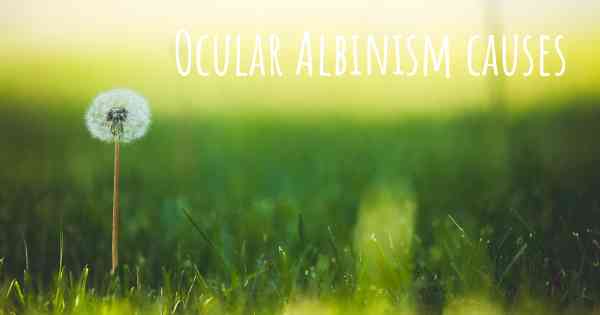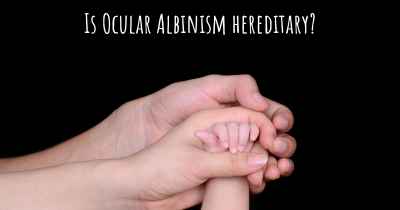Which are the causes of Ocular Albinism?
See some of the causes of Ocular Albinism according to people who have experience in Ocular Albinism

Ocular albinism is a genetic eye disorder that primarily affects the pigmentation of the eyes. It is characterized by reduced or absent coloration in the iris, retina, and other ocular tissues. This condition is caused by mutations in certain genes that are involved in the production and distribution of melanin, the pigment responsible for giving color to the eyes, skin, and hair.
1. X-Linked Inheritance: The most common form of ocular albinism, known as X-linked ocular albinism, is caused by mutations in the GPR143 gene located on the X chromosome. Since males have only one X chromosome, a single copy of the mutated gene is sufficient to cause the condition. Females, on the other hand, have two X chromosomes, so they are usually carriers of the gene mutation and may exhibit milder symptoms or be unaffected.
2. Autosomal Recessive Inheritance: In rare cases, ocular albinism can be inherited in an autosomal recessive manner. This means that both copies of the gene, one from each parent, must be mutated for the condition to manifest. Autosomal recessive ocular albinism is caused by mutations in genes such as TYR, OCA2, or SLC45A2, which are involved in the production, transport, or processing of melanin.
3. Sporadic Mutations: In some instances, ocular albinism can occur due to spontaneous mutations that arise in an individual with no family history of the condition. These sporadic mutations can affect any of the genes associated with ocular albinism, leading to the development of the disorder.
4. Genetic Variability: The severity of ocular albinism can vary widely among affected individuals, even within the same family. This variability is due to the presence of different mutations in the genes associated with the condition, as well as other genetic and environmental factors that can influence the expression of these genes.
Ocular albinism primarily affects the eyes, leading to various visual impairments such as reduced visual acuity, nystagmus (involuntary eye movements), strabismus (misalignment of the eyes), and sensitivity to light. It is important for individuals with ocular albinism to undergo regular eye examinations and receive appropriate visual aids and support to manage their condition effectively.








